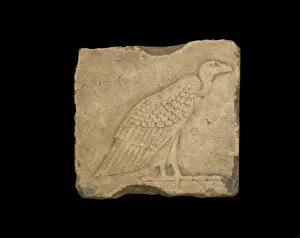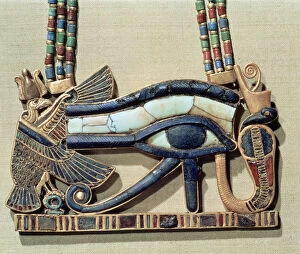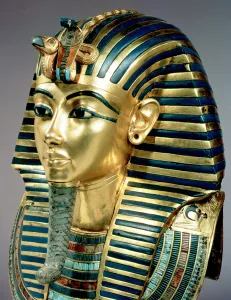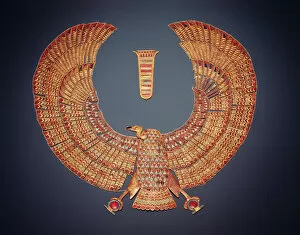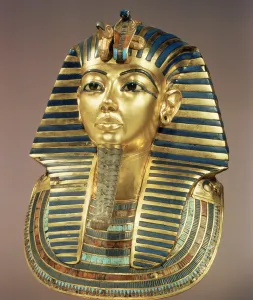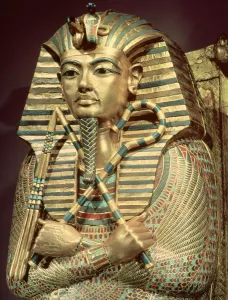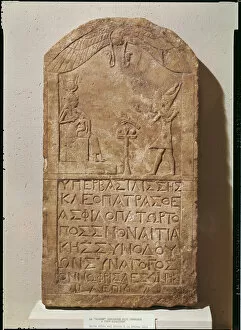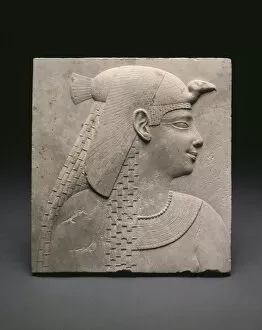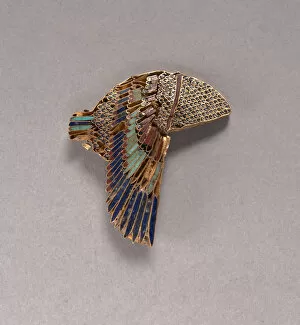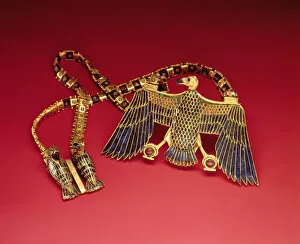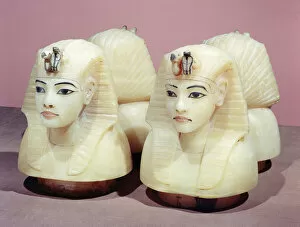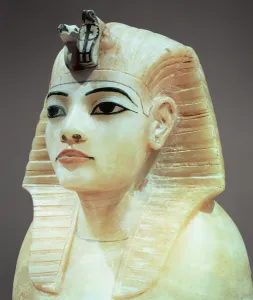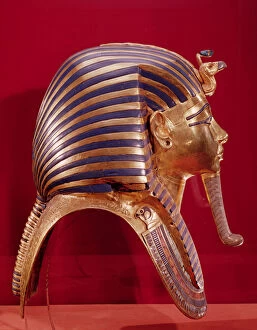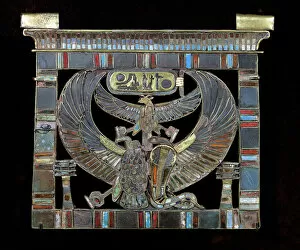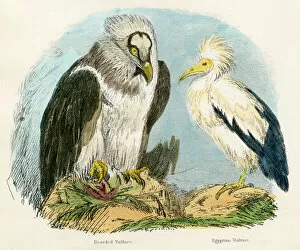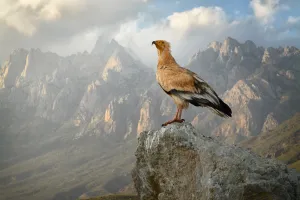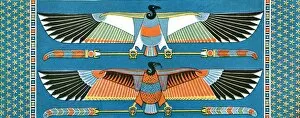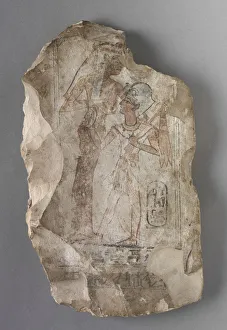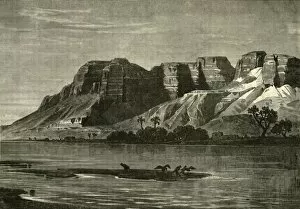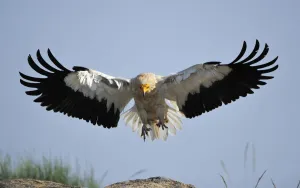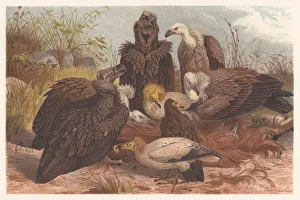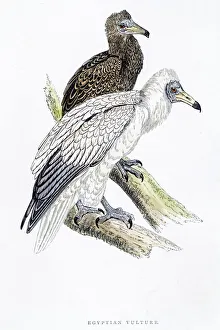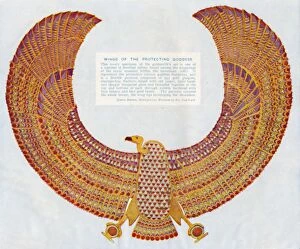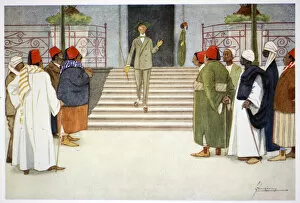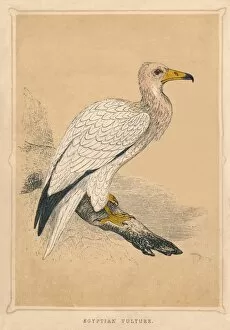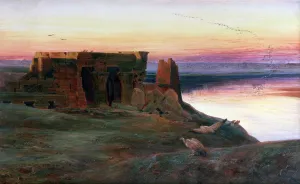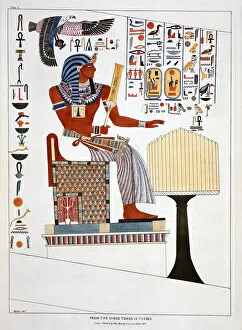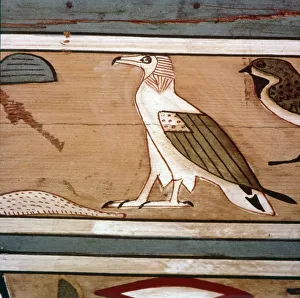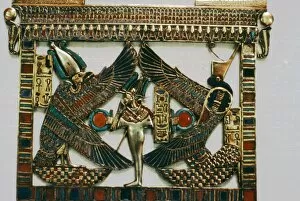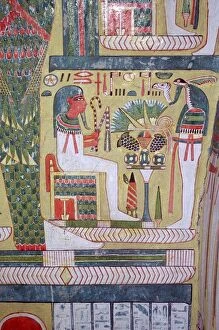Egyptian Vulture Collection (page 2)
The Egyptian Vulture (Neophron percnopterus) is a species of Old World vulture found in Africa, the Middle East, and parts of India
268 items
All Professionally Made to Order for Quick Shipping
-
Egyptian Vulture Collection
The Egyptian Vulture (Neophron percnopterus) is a species of Old World vulture found in Africa, the Middle East, and parts of India, and is a medium-sized bird with a wingspan of up to 4 feet and weighs around 2 pounds. The plumage is mostly white with black tips on the wings and tail feathers. Its head has a bald yellowish-orange face with dark eyes. It feeds mainly on carrion but also eats small rodents, reptiles, insects, eggs, and fruit. It builds its nest in cliffs or trees using sticks and other materials for insulation. Breeding pairs form long-term monogamous relationships that can last for many years. The Egyptian Vulture plays an important role in its ecosystem by helping to keep it clean by consuming dead animals that would otherwise rot away or spread disease. This species is listed as Near Threatened due to habitat destruction and persecution from humans who view them as pests or competitors for food resources.
+
Our beautiful pictures are available as Framed Prints, Photos, Wall Art and Photo Gifts
The Egyptian Vulture is a collection of stunning bird photographs available on Media Storehouse. These images showcase the beauty and majesty of this unique species, which is known for its striking appearance and remarkable intelligence. Our collection includes wall art, framed prints, photo prints, canvas prints, jigsaw puzzles, and greeting cards featuring these magnificent birds in their natural habitat. As members of the Accipitridae family within the Accipitriformes order, Egyptian Vultures are characterized by their sharp talons and hooked beaks that allow them to hunt prey with precision. They are also known for their distinctive white plumage and yellow faces. Whether you're an avid bird watcher or simply appreciate beautiful photography, the Egyptian Vulture collection offers something for everyone. These high-quality prints make great gifts for nature lovers or can be used to add a touch of elegance to any home.
+
What are Egyptian Vulture (Accipitridae Accipitriformes Birds Animals) art prints?
Egyptian Vulture art prints are high-quality reproductions of artwork featuring this unique bird species. These prints showcase the beauty and majesty of Egyptian vultures, which are known for their distinctive appearance and impressive hunting skills. Egyptian vultures have a striking white plumage with black flight feathers, as well as a yellow face and beak. They are found in parts of Europe, Asia, and Africa, where they feed on carrion and other small animals. Artists who specialize in wildlife or avian subjects often create Egyptian Vulture art prints using various mediums such as watercolor paintings or digital illustrations. These prints can be used to decorate homes or offices while also serving as educational tools for those interested in learning more about these fascinating birds. Egyptian Vulture art prints offer a stunning representation of one of nature's most remarkable creatures that will captivate any admirer of wildlife art.
+
What Egyptian Vulture (Accipitridae Accipitriformes Birds Animals) art prints can I buy from Media Storehouse?
We offer a wide range of Egyptian Vulture art prints that are perfect for bird lovers and collectors alike. These stunning prints showcase the beauty and majesty of these birds, featuring them in various poses and settings. One popular print is a close-up portrait of an Egyptian Vulture, showing off its distinctive features such as its bald head and yellow beak. Other prints feature the vultures in flight, soaring over landscapes or perched on tree branches. Media Storehouse also offers black and white prints that highlight the intricate details of these birds' feathers, capturing their unique patterns and textures. Whether you're looking for a bold statement piece or something more subtle to add to your collection, we have plenty of options to choose from. With high-quality printing techniques used on premium materials, these art prints are sure to impress anyone who sees them.
+
How do I buy Egyptian Vulture (Accipitridae Accipitriformes Birds Animals) art prints?
To buy Egyptian Vulture art prints from Media Storehouse, you can browse our extensive collection of bird and animal artwork online. Simply search for "Egyptian Vulture" in the search bar on our website to see all available options. Once you have found a print that you like, select the size and format (such as canvas or framed) that suits your needs. We offer high-quality prints made with archival materials to ensure longevity and durability. You can choose from a range of sizes to fit any space in your home or office. To purchase your chosen print, simply add it to your cart and follow the checkout process. We accept various payment methods including credit cards and PayPal. Once your order is processed, they will carefully package and ship it directly to you. With our vast selection of artwork featuring Egyptian Vultures, finding the perfect piece for your collection has never been easier.
+
How much do Egyptian Vulture (Accipitridae Accipitriformes Birds Animals) art prints cost?
As an online platform that offers a wide range of art prints, we have a collection of Egyptian Vulture art prints available for purchase. The cost of these prints varies depending on the size and type of print selected by the customer. However, you can be assured that they will receive high-quality prints that are produced using state-of-the-art printing technology. Media Storehouse is committed to providing its customers with affordable prices without compromising on quality. Therefore, you can expect competitive pricing for their Egyptian Vulture art prints. Additionally, we offer various payment options to make it easier for customers to complete their purchases. If you're interested in purchasing Egyptian Vulture art prints from Media Storehouse, you can browse through our collection and select the print(s) that best suit your preferences and budget.
+
How will my Egyptian Vulture (Accipitridae Accipitriformes Birds Animals) art prints be delivered to me?
Your Egyptian Vulture art prints will be delivered to you in a safe and secure manner. We take great care in packaging your prints so that they arrive at your doorstep undamaged. Our standard delivery method is through postal services, which ensures that your package is handled with care throughout the journey. We use high-quality materials for our packaging to protect your prints from any potential damage during transit. Your art prints will be rolled up and placed inside a sturdy cardboard tube, which will then be sealed and labeled with all necessary shipping information. Once dispatched, you can track the progress of your order using the tracking number provided by us. If there are any issues or concerns regarding the delivery of your Egyptian Vulture art prints, please do not hesitate to contact us immediately so we can assist you accordingly. We strive to provide our customers with exceptional service and quality products every time.

